At the heart of Rome stands a building that has defied time, gravity, and even comprehension.
The Pantheon, once a temple to all gods, now a church to one, is more than stone and mortar.
It’s Rome’s masterpiece.
For nearly 1,900 years, this structure has whispered secrets about mathematics, engineering, and the nature of perfection itself.
To step inside is to enter not just a building, but an idea — one that fuses heaven and earth into a single, immortal form.
The Architecture of a Perfect Thought
When you enter the Pantheon, your eyes rise instinctively toward the dome — an unbroken curve so precise that it feels impossible.
The space is both vast and intimate, monumental yet perfectly balanced.
That balance is no accident.
The dome forms a perfect hemisphere, and the height from the marble floor to the oculus — the circular opening at the dome’s apex — is exactly equal to its diameter: 43.3 meters (142 feet).
In other words, if you could draw an invisible sphere inside the Pantheon, it would touch the floor, the walls, and the inner curve of the dome in perfect symmetry.
Geometry as Theology
For the ancients, geometry was sacred.
Plato taught that the universe was structured through perfect forms: the sphere, the cube, and the other Platonic solids.
To the Roman architects and philosophers who inherited this worldview, these forms represented the perfection of divinity itself.
The Pantheon’s design fuses two of these forms — the cube and the sphere — into one harmonious whole.
🌌 Enjoying this? Join us on YouTube, where ideas from Beyond the Cosmic Veil will come alive starting in 2026. Subscribing is free — but it supports the channel more than you realize. One click helps bring classical wisdom and cosmic insight to a wider world.
The building’s base forms a perfect square, while its dome encloses a perfect hemisphere. Together, they symbolize the marriage of heaven (the circle) and earth (the square).
To stand beneath that dome is to stand in the center of a cosmic equation.
It’s an architectural expression of unity, of the divine touching the mortal, the infinite contained within the finite.
The Immortal Dome
But philosophy and mysticism alone don’t hold up a dome that large for two millennia.
Engineering does.
The Pantheon’s dome remains the largest unreinforced concrete dome in the world — an unbroken span that has resisted collapse for nearly two thousand years.
Even modern engineers study it in awe, wondering how such an ancient civilization achieved such enduring strength.
The Romans mastered concrete like no one before or since. At the base of the dome, they used dense, heavy aggregates like travertine.
As the structure rose, they lightened the mix — substituting volcanic pumice and tufa toward the top. This created a gradient of density, and along with reducing volume, it cut down on stress as the dome ascended.
The dome’s thickness also decreases from about 6 meters at the base to just 1.2 meters near the oculus, elegantly relieving pressure where it’s least needed.
And then there are the coffers — those sunken rectangular panels carved into the dome’s surface. They reduce weight, but also introduce rhythm, harmony, and shadow. Their beauty is not decoration — it’s function disguised as art.
This is the Roman way: every detail purposeful, every ornament structural.
The Divine Aperture
At the summit of the dome is the oculus — an 8.8-meter opening that seems to pierce the heavens.
It serves three purposes at once:
Structural – By removing mass from the dome’s weakest point, the oculus prevents cracking.
Illuminative – It creates a shifting circle of sunlight that drifts across the marble floor, marking the passage of time like a cosmic sundial.
Symbolic – It’s the eye of the gods. A literal connection between the earthly realm below and the divine beyond.
Rain falls freely through the oculus, reminding every visitor that this space was never meant to be sealed from nature.
At noon, when the sunlight aligns with the entrance, the entire space feels alive — the invisible geometry of light itself completing the architects’ design.
Hidden Harmonies
In the 20th century, scholars analyzing the Pantheon’s floor plan discovered something astonishing: a subtle pattern of rotated squares that fit within the circle of the dome in root-two proportion — a ratio found throughout classical architecture and sacred geometry.
This proportion was not arbitrary. Root-two (√2) represents the relationship between a square and its diagonal — between stability and movment, or the eternal and the finite.
The Pantheon, then, is more than a dome. It’s a living diagram of a cosmic mathematical transformation.
The circle and square — heaven and earth — are united by a proportional law that symbolizes the eternal cycle of order emerging from chaos.
This is why the Pantheon feels alive.
The Number of Perfection
Even the decorative details hide numerical precision.
The dome’s coffers are arranged in 28 radial sections, perfectly matching the 28 giant Corinthian columns supporting the portico.
In ancient mathematics, 28 was considered a perfect number — one that equals the sum of its divisors (1 + 2 + 4 + 7 + 14 = 28).
To the philosophers of antiquity, such numbers symbolized completeness and cosmic order. By embedding this number into the building’s very structure, the Romans were encoding harmony into matter itself.
It’s as if the Pantheon’s builders were less concerned with creating a building than with manifesting a theorem — one that could be walked into.
The Dance of Light and Stone
Every day, the Pantheon’s interior transforms as the sun shifts across the sky. The oculus beam glides over the walls like a celestial compass, illuminating statues and niches with precise timing.
Some historians believe this movement was intentionally designed to mark key dates or divine events.
Even without instruments, ancient Roman builders understood how to turn geometry into experience. The Pantheon doesn’t just house light.
It uses light as a building material.
As the sunlight touches the marble floor and moves through the space, you can almost feel the ancient idea of harmony come alive.
The Bridge Between Worlds
When Emperor Hadrian commissioned the Pantheon around 118AD, he was building a bridge between the past and future, matter and spirit, Rome and eternity.
That bridge still stands.
The Pantheon has outlived empires, religions, and even the civilization that built it.
It has been a temple to Jupiter, a church to Christ, and a tomb for artists like Raphael — whose remains now rest beneath its perfect dome.
Every generation reinterprets it, but none surpass it.
Even modern architecture — with all its steel and algorithms — continues to orbit the Pantheon’s silent perfection. From Brunelleschi’s dome in Florence to Michelangelo’s in St. Peter’s, each owes its lineage to this Roman ancestor.
Eternal Resonance
The Pantheon is a declaration that harmony, proportion, and divine order can outlast time itself.
It teaches us that true immortality isn’t found in technology or empire, but in unity — with form, with nature, with the laws that govern both spirit and matter.
It reminds us that truth is as enduring as its dome.
Perfection isn’t about permanence.
It’s about balance.
And balance — when achieved — becomes eternal.


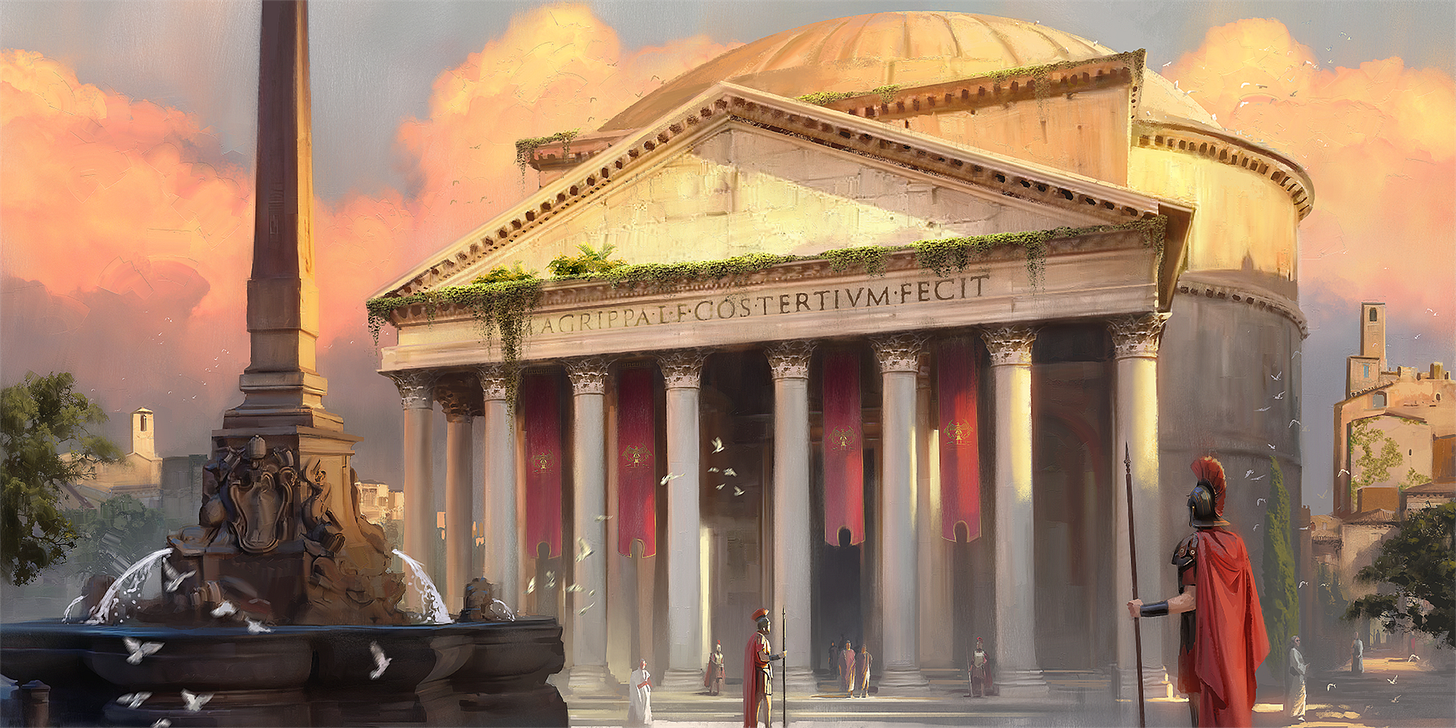
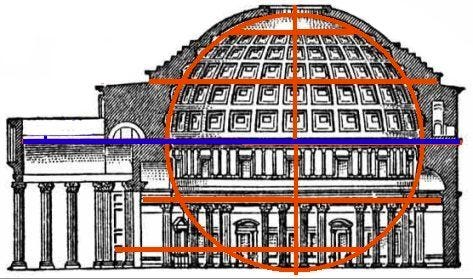
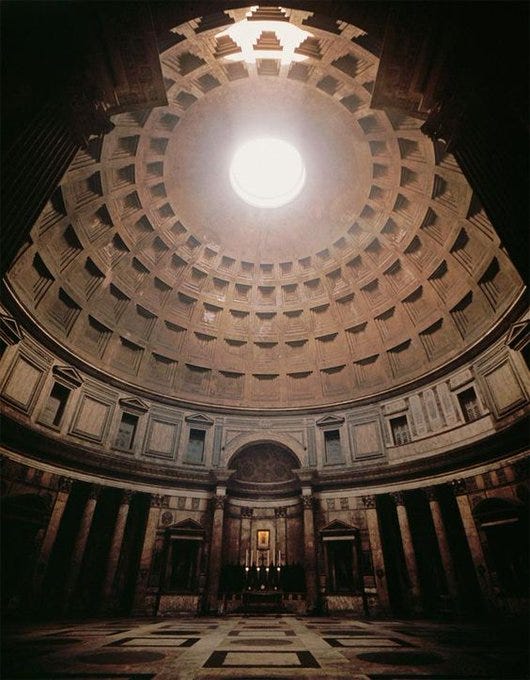
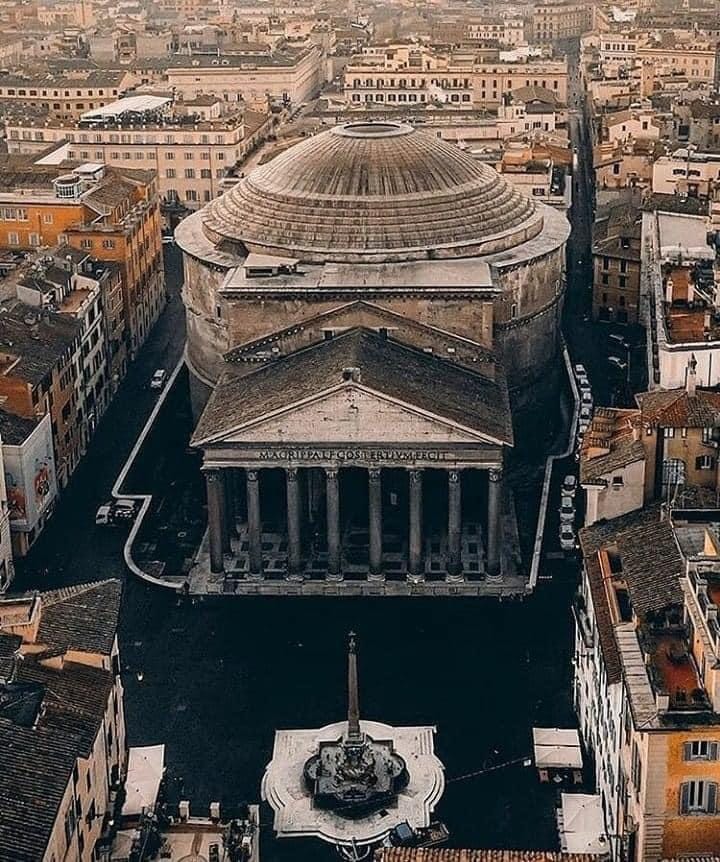
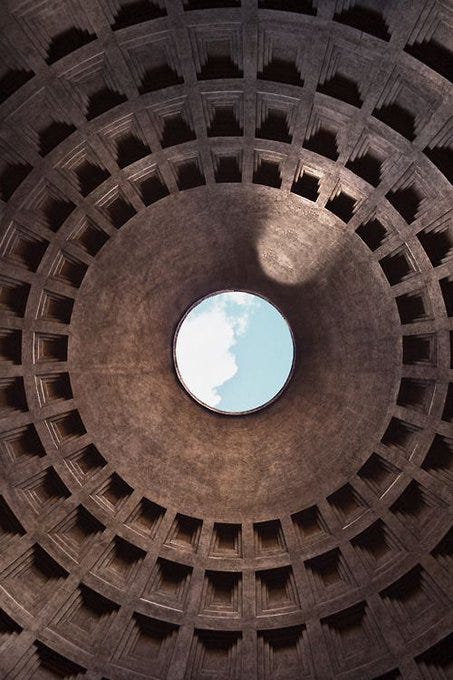
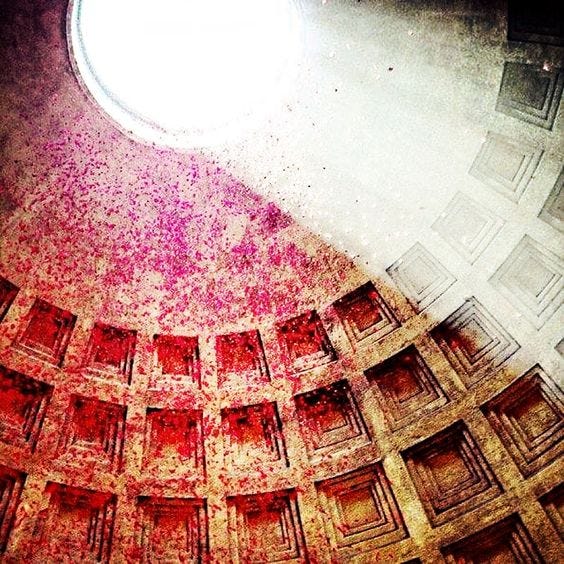
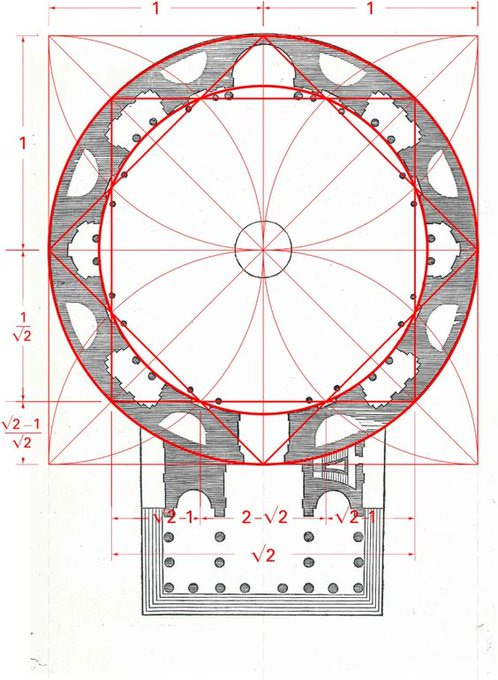
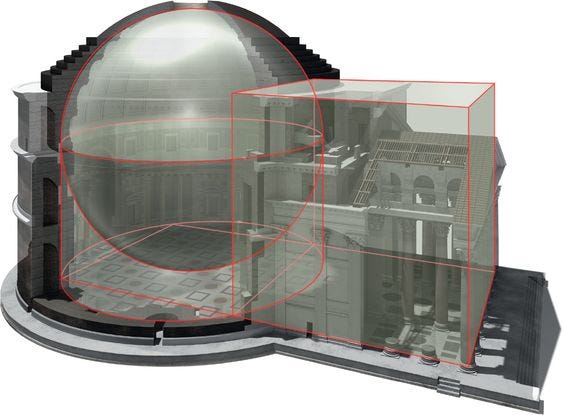
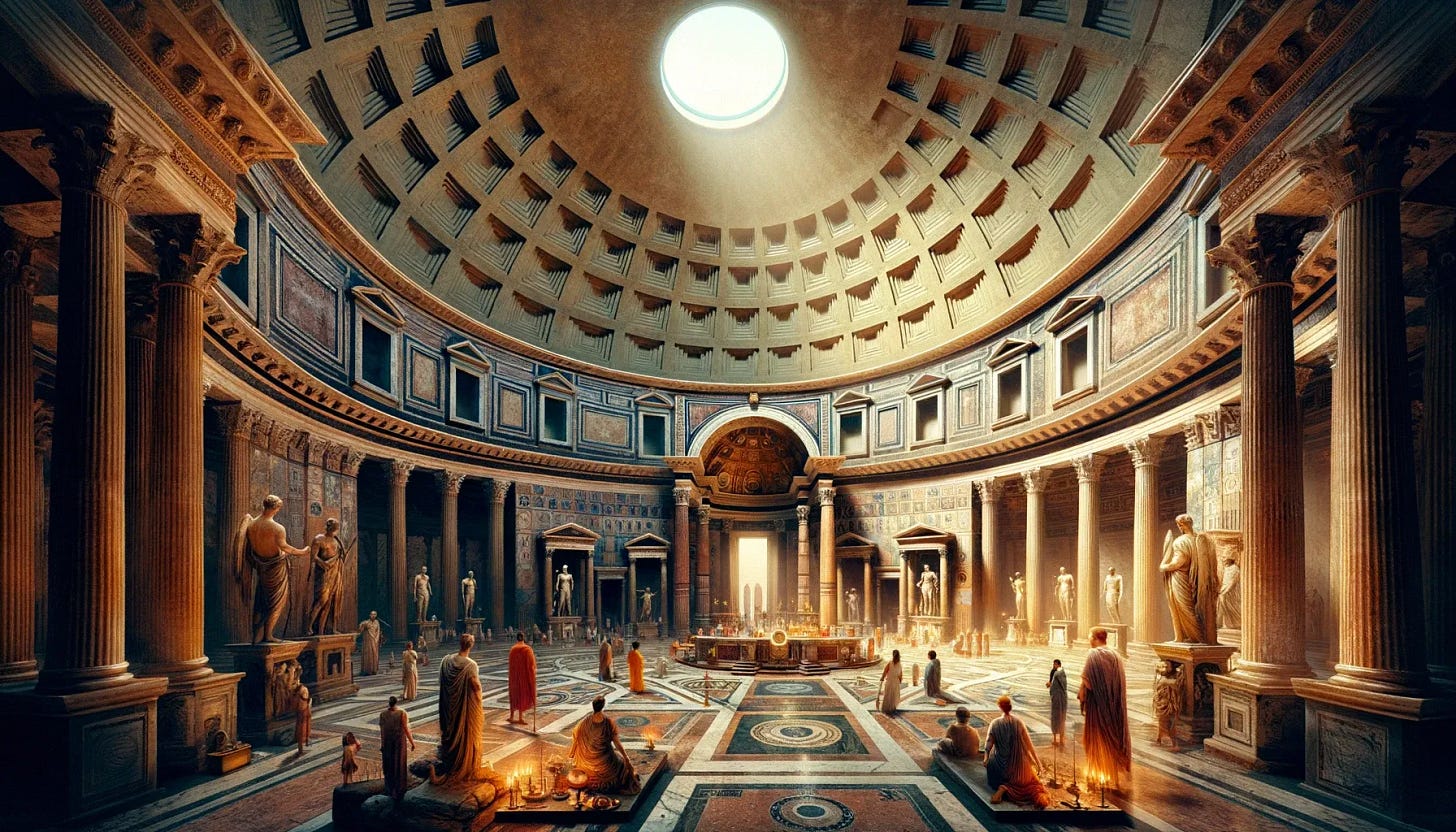
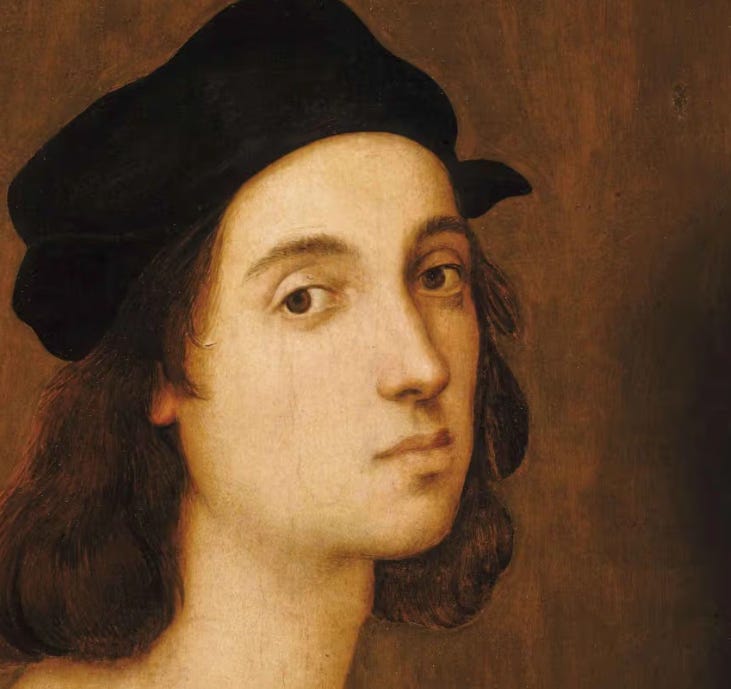
The pantheon is special, I love it!